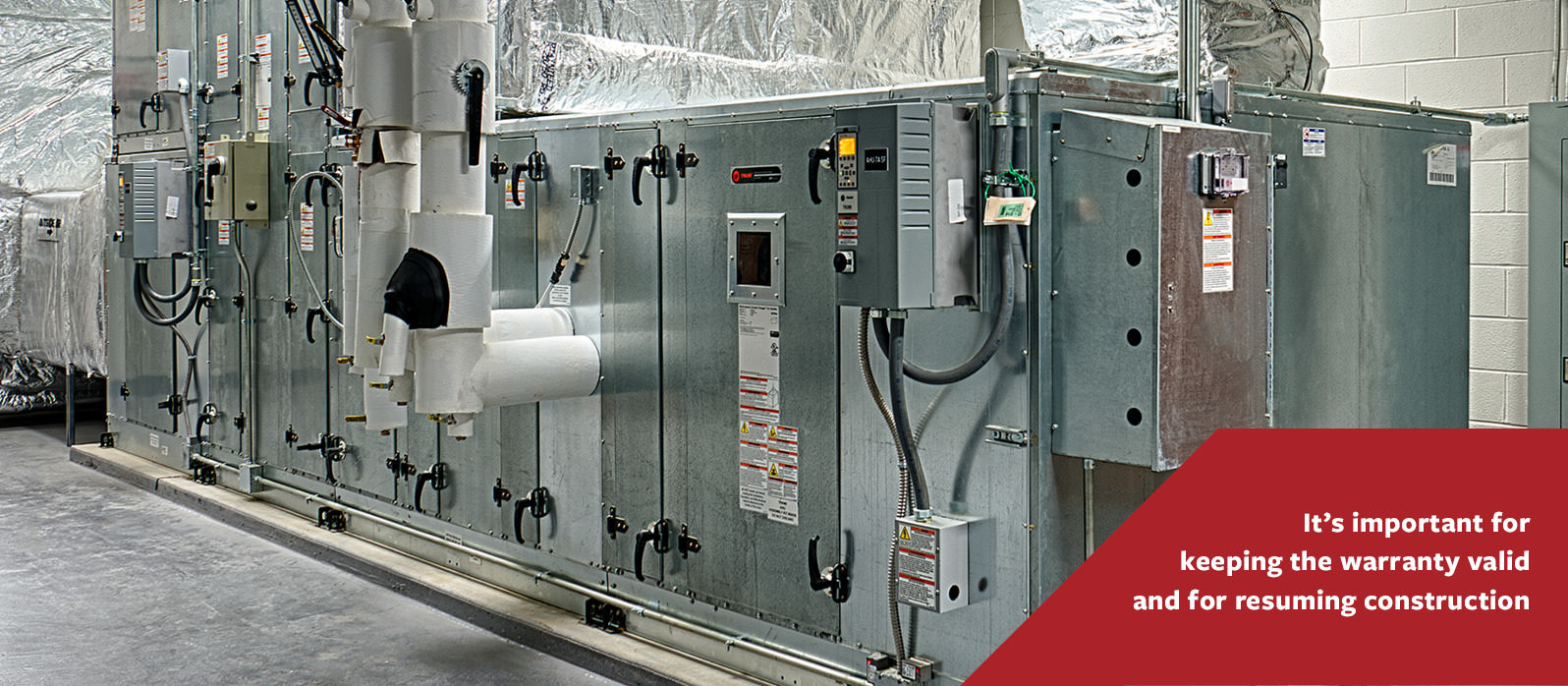Construction Project on Hold? Don’t Forget to Maintain Stored Equipment
By Lee Hodkey | Apr 16, 2020

One of the downstream effects of the COVID-19 pandemic is that many owners are placing their construction projects on hold. As they do so, they need to make sure that they are properly storing any equipment that has been delivered — or even installed — that will not be operational while the project is on hold.
Stored equipment requires maintenance, and warranties may be void if the equipment isn’t stored according to the manufacturer’s requirements.
For example, air handler manufacturers often have extensive requirements for AHUs that have been delivered but will be stored on site. One custom manufacturer’s storage requirements include (among other things) loosening belt tension on all belt-driven fans, greasing all greaseable bearings, manually rotating fan shafts at regular intervals, draining coils, and wrapping VFDs in plastic with desiccant enclosed.
Another example is pumps. Pump manufacturer storage requirements vary: Some require a quarter turn manual rotation weekly, while others require the shaft to be rotated multiple times, at least every three months.
If you’re putting a project on hold, here’s what we recommend when storing equipment:
Get the manufacturers’ Installation, Operation, and Maintenance literature (IOM) before the contractors leave the site. The IOMs contain the manufacturer’s storage requirements and are an important reference. If you don’t have the IOMs, ask the contractors or the manufacturer’s rep to provide storage instructions and a maintenance schedule for the equipment.
Consider your equipment storage dates to be the date the equipment was received by the contractor, not the date your project was put on hold. This makes a difference for the maintenance schedule. If your job goes on hold in April, but the equipment was shipped to the site in February, and the motor needs to be exercised after 3 months, then it needs to be rotated in May, not July.
Decide who is performing the maintenance. Do you (the owner) have a maintenance staff that is still working, who can do the maintenance? Or is it a new building that isn’t staffed yet? If it’s the latter, then you may need to hire the contractor to perform the maintenance under a separate contract.
Keep records of your equipment storage and maintenance activities. They may be helpful for potential warranty issues and can reduce speculation or finger-pointing if the equipment doesn’t function as expected at the end of construction.
When construction resumes, refer to the Installation, Operation, and Maintenance literature for the requirements for bringing equipment back into operation. This would be done by the contractor who is there when construction starts again. Keep in mind that it may not be the same contractor when construction starts again.
Thanks for the information ! Have a great day!
Interesting. Good luck.